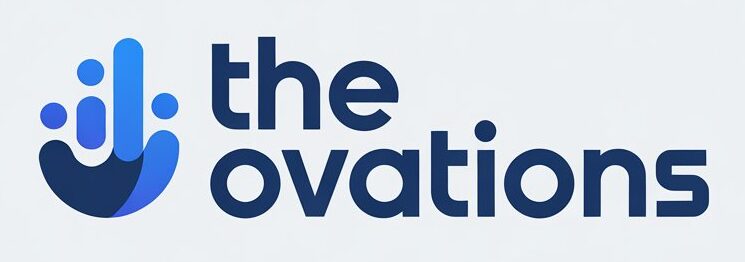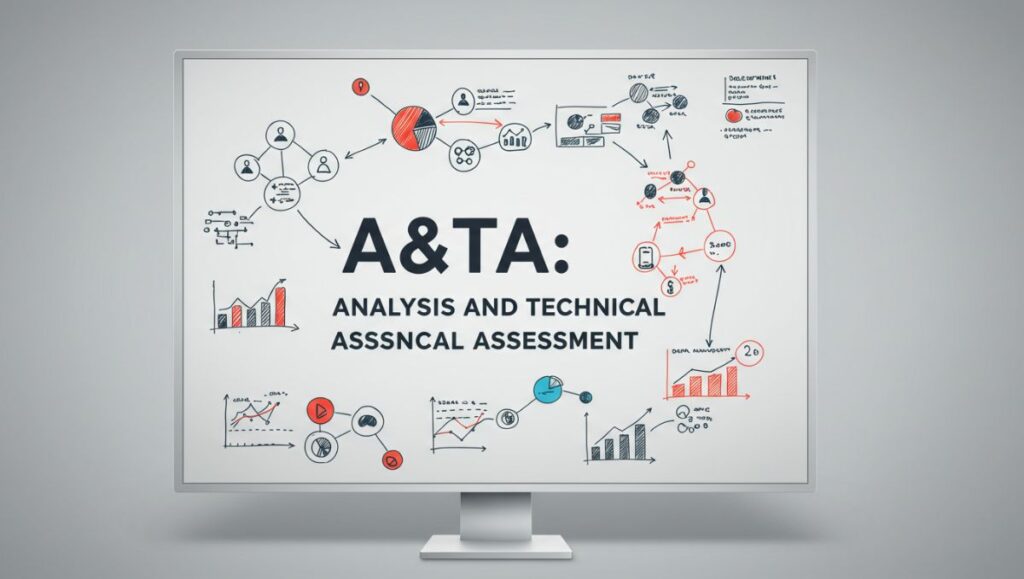In today’s competitive world, businesses and organizations rely heavily on data-driven insights and technical evaluations to make informed decisions. One essential process that bridges the gap between innovation and practical implementation is A&TA, short for Analysis and Technical Assessment.
A&TA plays a vital role in ensuring that every technological solution, business model, or operational strategy is both effective and sustainable. By combining analytical thinking with technical expertise, A&TA helps companies identify opportunities, minimize risks, and achieve long-term growth.
This article explores the meaning, importance, components, and applications of A&TA, along with how it shapes industries in the era of digital transformation.
What Is A&TA?
A&TA (Analysis and Technical Assessment) refers to a structured process used to evaluate systems, technologies, or projects from both analytical and technical perspectives.
In simpler terms, it’s a method of analyzing how something works, determining whether it meets specific standards, and identifying areas for improvement. A&TA is widely used in fields such as engineering, information technology, defense, energy, and business management.
The purpose of A&TA is to ensure that new solutions are not only innovative but also practical, cost-effective, and aligned with organizational goals. It combines data analytics, technical evaluation, and strategic forecasting to deliver a holistic understanding of systems and performance.
The Importance of A&TA in Modern Industries
The global economy is becoming increasingly reliant on complex technologies. From artificial intelligence to renewable energy systems, every innovation demands thorough evaluation before deployment. That’s where A&TA steps in.
1. Ensures Technical Feasibility
Before investing in a new project or product, organizations must know if it’s technically viable. A&TA helps determine whether the technology can perform as expected under real-world conditions.
2. Reduces Risk
Through careful analysis and assessment, A&TA identifies potential risks early in the process. This allows organizations to take preventive measures and avoid costly failures later.
3. Improves Decision-Making
By combining technical data with analytical insights, A&TA provides decision-makers with accurate, evidence-based recommendations. This leads to smarter investments and more efficient resource allocation.
4. Supports Innovation
Innovation is most successful when it’s built on strong technical foundations. A&TA encourages creativity while ensuring that new ideas are feasible and aligned with strategic goals.
Core Components of A&TA
The A&TA process is made up of several interconnected components, each contributing to a comprehensive evaluation.
1. Analytical Evaluation
This stage focuses on collecting and interpreting data. Analysts study performance metrics, operational statistics, and historical information to understand current conditions and predict future outcomes.
2. Technical Review
In this phase, experts assess the engineering or technological aspects of a system. They test design integrity, compatibility, and functionality to ensure everything meets defined standards.
3. Risk Analysis
A&TA includes an in-depth risk assessment to identify vulnerabilities, security issues, and potential failure points. By doing so, it safeguards long-term sustainability.
4. Cost–Benefit Analysis
No project is complete without financial evaluation. A&TA compares costs against expected benefits, helping organizations determine whether an initiative is worth pursuing.
5. Performance Benchmarking
Through benchmarking, A&TA measures performance against industry standards or competitors. This helps organizations understand where they stand and how to improve.
How A&TA Works: The Process Explained
The A&TA process typically unfolds in a structured sequence to ensure accuracy and consistency.
Step 1: Define Objectives
Every A&TA project begins with clear objectives — whether it’s evaluating a new product, optimizing an existing system, or assessing a strategic initiative.
Step 2: Data Collection
Reliable data is the foundation of effective analysis. The team gathers technical specifications, operational data, and market insights relevant to the project.
Step 3: Analytical Assessment
Here, analysts apply statistical tools, AI algorithms, or modeling techniques to interpret the data and identify key patterns or inefficiencies.
Step 4: Technical Evaluation
Engineers and experts review the technical components, verifying compliance with safety, quality, and performance standards.
Step 5: Reporting and Recommendations
Finally, the results are compiled into a detailed report outlining findings, risks, and actionable recommendations for improvement.
Applications of A&TA Across Industries
The flexibility of A&TA allows it to be applied in a wide range of industries — from engineering and defense to IT and finance.
1. Information Technology
In IT, A&TA is used to evaluate software systems, cybersecurity frameworks, and infrastructure scalability. Technical assessments ensure that digital solutions are reliable and secure.
2. Engineering and Manufacturing
AandTA helps engineers optimize design processes, test product performance, and ensure compliance with safety standards. This leads to better product quality and efficiency.
3. Defense and Aerospace
In these high-stakes sectors, AandTA is essential for evaluating defense systems, equipment reliability, and mission readiness. It ensures that technologies perform under extreme conditions.
4. Energy and Sustainability
Energy companies use AandTA to assess renewable energy solutions, grid performance, and resource management. The process helps balance environmental responsibility with technical practicality.
5. Business Strategy and Management
Beyond technology, A&TA supports decision-making in corporate strategy. Businesses use it to evaluate mergers, process improvements, and technology adoption plans.
Benefits of Implementing A&TA
1. Data-Driven Insight
AandTA empowers organizations to make decisions based on verified data rather than assumptions, leading to more accurate and effective outcomes.
2. Operational Efficiency
By identifying inefficiencies and areas for improvement, AandTA helps organizations streamline processes and increase productivity.
3. Cost Optimization
The process prevents wasteful spending by ensuring that every investment is justified and strategically aligned.
4. Compliance and Quality Assurance
A&TA ensures adherence to industry standards, regulations, and safety requirements, minimizing the risk of legal or reputational issues.
5. Continuous Improvement
A&TA is not a one-time activity — it’s an ongoing process. Regular assessments help organizations adapt to new technologies and changing market conditions.
Challenges in Conducting A&TA
While A&TA offers numerous benefits, implementing it effectively can be challenging.
1. Data Quality Issues
Accurate analysis depends on high-quality data. Incomplete or outdated data can lead to incorrect conclusions.
2. Resource Constraints
Conducting thorough technical assessments requires skilled personnel, time, and financial investment — which may be limited for smaller organizations.
3. Rapid Technological Change
In industries like IT or aerospace, technology evolves so quickly that assessments can become outdated soon after completion.
4. Communication Gaps
A&TA involves collaboration between analysts, engineers, and decision-makers. Miscommunication can lead to misunderstandings or implementation errors.
Despite these challenges, organizations that establish structured A&TA frameworks gain a significant competitive advantage in innovation and reliability.
The Role of Technology in Enhancing A&TA
The rise of AI, machine learning, and big data analytics has transformed how A&TA is conducted.
-
AI Algorithms automate data analysis, detecting patterns and anomalies faster than traditional methods.
-
Digital Twins allow real-time simulation of systems, reducing the need for physical testing.
-
Cloud-Based Platforms enable teams to collaborate globally, sharing results and updates instantly.
-
Predictive Analytics helps forecast future outcomes and guide strategic decisions based on trends.
With these technological advancements, A&TA has become more accurate, efficient, and accessible than ever before.
A&TA and Sustainable Development
In the context of sustainability, A&TA plays a crucial role in helping organizations balance innovation with environmental responsibility.
By assessing the technical and ecological impact of projects, AandTA ensures that new developments contribute positively to society. For instance, renewable energy firms use AandTA to evaluate carbon reduction efficiency and long-term viability of green technologies.
Through such assessments, AandTA supports the global shift toward sustainable, technology-driven growth.
The Future of A&TA
As industries continue to digitalize, AandTA will evolve into an even more sophisticated discipline. Future trends include:
-
AI-Augmented Assessment Tools – Automating deeper technical analysis with real-time insights.
-
Blockchain for Data Integrity – Ensuring transparency and traceability in assessment records.
-
Cross-Industry Collaboration – Shared frameworks between sectors to standardize technical evaluation.
-
Ethical Assessment Models – Evaluating not only technical performance but also social and ethical impacts.
The future of AandTA lies in its ability to merge technology, sustainability, and human insight — forming the foundation of innovation in the digital age.
Conclusion
A&TA (Analysis and Technical Assessment) stands as a cornerstone of modern innovation and decision-making. By combining data analysis with technical expertise, it ensures that every technological or strategic move is backed by solid evidence.
From improving product performance to guiding sustainable development, AandTA empowers organizations to innovate responsibly and intelligently. As industries embrace AI, automation, and global collaboration, the importance of AandTA will continue to grow — shaping the way we design, build, and evolve in the years ahead.






